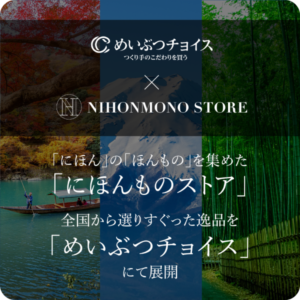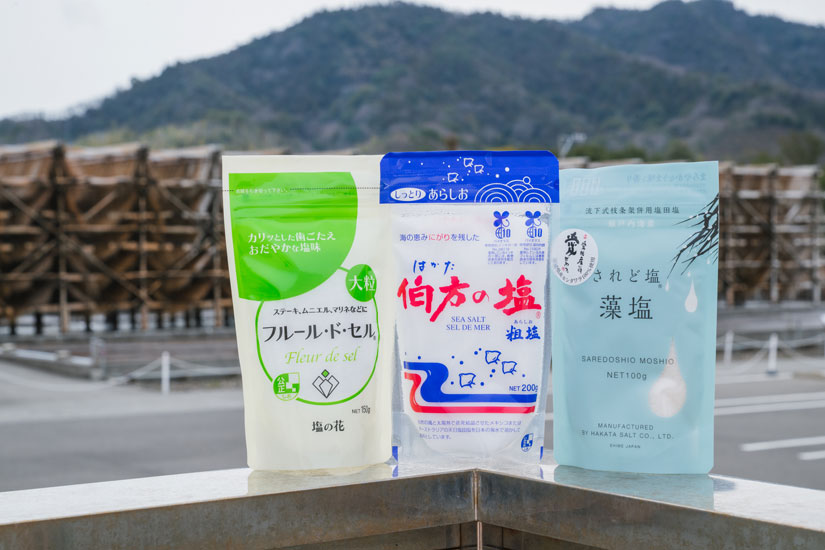Omishima, Imabari City, is one of the islands on the Shimanami Sea Route, which connects Ehime and Hiroshima Prefectures. Hakata Shogyo Corporation, which has a factory here, is a salt manufacturer that produces Hakata no Shio (Hakata salt), widely known for its commercials with a striking sound logo. Founded 52 years ago, the company’s history is steeped in the history of the salt industry in the Seto Inland Sea and salt in Japan.
The Birth of Hakko-no-Salt
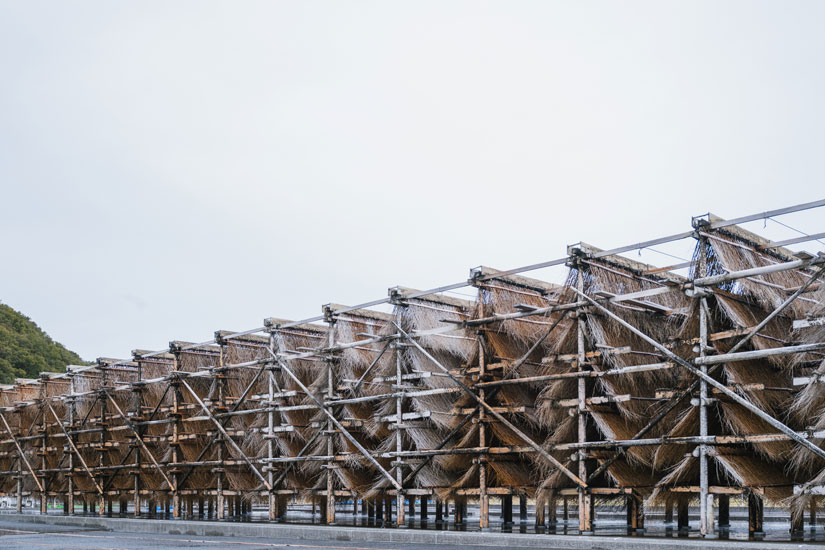
The birthplace of Hakata-no-Salt is Hakata Island, also located in the island of Imabari City. The island, located along the Shimanami Sea Route, was the last remaining salt field in Ehime Prefecture, and has a history of a consumer movement to protect salt produced using the salt fields that the Japanese are familiar with.
The Seto Inland Sea coastline has few rainy days throughout the year, and the tidal range is large. Around 1953, a more efficient method of salt production was introduced, called the “falling-back” method, which utilizes the land three-dimensionally and allows salt to be produced regardless of the season, day or night. By 1957, all salt fields on Hakata Island had been converted from “irihama-style salt fields” to “irihama-style salt fields with branch and row racks”.
Hakata no Shio” (Hakata salt), born from a consumer movement
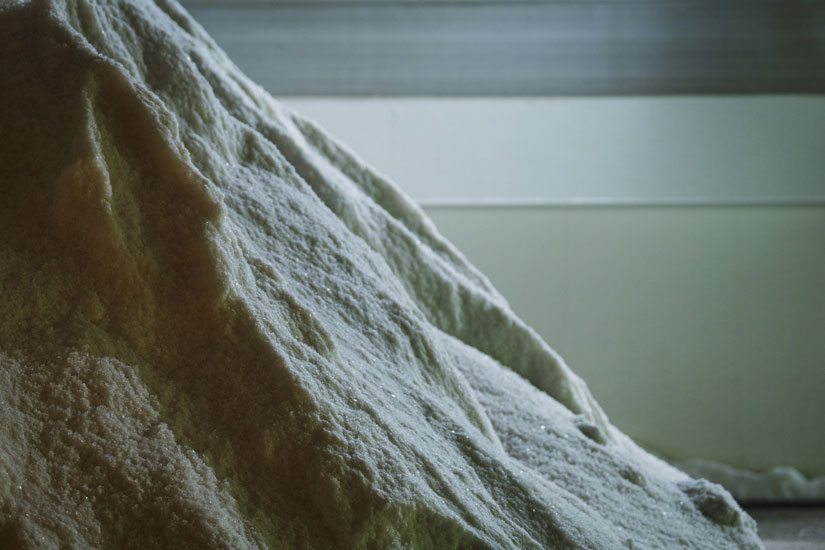
In the early Showa period (1926-1989), approximately 90% of the nation’s salt production was concentrated in the Seto Inland Sea region, which includes Ehime, Kagawa, and Hiroshima. At its peak, Hakata Island produced approximately 24,000 tons of salt annually. This represents about 2-3% of the nation’s annual salt production, and the fact that such a large percentage was produced on a small island shows how the salt industry was a major industry on Hakata Island.
Since the enactment of the “Salt Monopoly Law” in 1905, salt, like cigarettes and alcohol, has been a national product, and its production and sales have been under the control of the government. In order to shift from agrarian salt production to industrial mass production during Japan’s period of rapid economic growth, the Law on Temporary Measures for the Modernization of the Salt Industry was enacted in 1971, banning in principle all methods of salt production other than those using ion-exchange membranes. As a result, the traditional Japanese salt fields disappeared, and the scenery of the “flowing salt fields with branch and joint bridges” on Hakata Island, which once stretched over dozens of hectares, was buried in history.
However, the salt produced by this method was used for industrial purposes and chemical products, and its safety for food use was not sufficiently ensured. This concern about the safety of salt led to a consumer movement to preserve natural salt.
Food should be as close to nature as possible. There is absolutely no need to use chemicals and force over-refined ion-exchange membrane salt, which is purified like chemicals, to be used for food. The campaign for the preservation of natural salt was launched by the late Fujiko Sugamoto, the permanent chairperson of the Japan Natural Salt Promotion Association, and other people who were consumers of natural salt, including some who lived in Matsuyama City. The campaign to preserve natural salt was led by the late Fujiko Sugamoto, the permanent president of the Japan Natural Salt Promotion Association, and volunteers living in Matsuyama City who were also consumers. The movement spread nationwide, and with the cooperation of consumers and organizations in various regions, 50,000 signatures were collected in a short period of time, making it a major movement to influence the government.
In 1973, Hakata no Shio (Hakata salt) was born.
Producing safe and reliable salt under strict conditions

Unlike sun-dried salt, which is obtained by evaporating seawater in the sun, Hakkata-no-shio salt is produced by completely dissolving sun-dried salt imported from Mexico and Australia in seawater from the Seto Inland Sea, filtering it to produce clean, thick salt water (dissolution process), and boiling it in a pot to recrystallize the salt. This dissolution process is also important to ensure that the salt contains the bittern component of seawater. Sun-dried salt produced in large-scale overseas salt fields over a period of two to three years is industrial salt, so the bittern component is intentionally removed. The bittern is then dissolved in seawater from the Seto Inland Sea, leaving just the right amount of bittern to create a mild salt without a salty taste. This process was permitted by the Japanese government in 1973, except for ion-exchange membrane salt production, and is a somewhat special process that was developed at a time when making salt directly from seawater was restricted. However, it makes sense in terms of keeping production costs down and ensuring stable quality and prices, and it continues to be used to this day with repeated improvements. Unlike industrial methods that emphasize efficiency, salt production is full of tradition and ingenuity.
Imported sun-dried salt is dissolved in seawater from the Seto Inland Sea to create a thick brine that is slowly boiled down in a cauldron to form salt crystals. After removing excess water, the crystallized salt is allowed to dry naturally in the factory for several days, and finally undergoes a process to thoroughly remove foreign substances.
Salt with just the right amount of bittern left
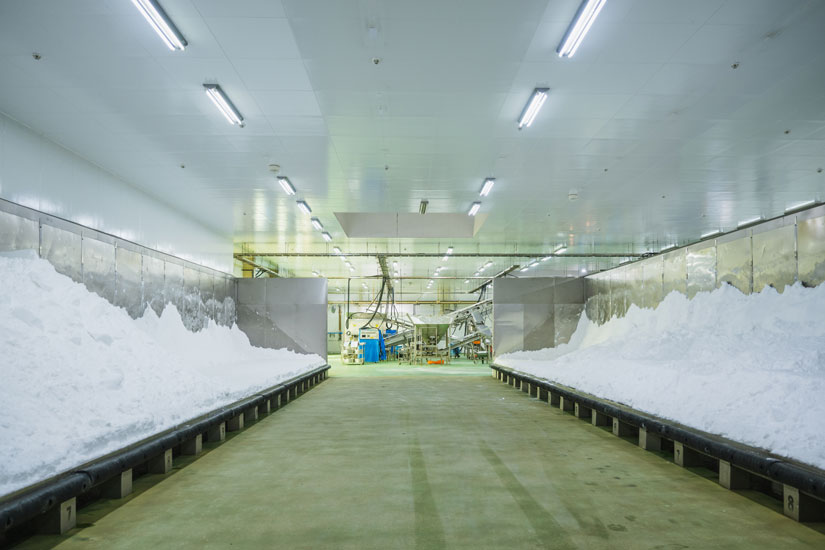
The representative of the company, Mr. Kazumi Ishimaru, says that one of the characteristics of Hakkata salt is that it is salt with just the right amount of bittern left in it . Salt composed only of sodium chloride tends to have a sharp taste, giving a sharp “salt angle” sensation on the tongue. This is why it is important to have a moderate amount of bittern, which contains magnesium chloride and other elements. The right amount of bittern gives depth to the salty taste and creates a mellow flavor. However, too much bittern will cause a strong bitter taste, so the balance of the amount is very delicate.
At Hakata-no-Salt, salt is naturally dried for several days after being boiled in a cauldron in order to retain just the right amount of bittern. This is because if the salt is forcibly dehydrated using a machine, the bittern that is attached to the crystals is removed along with the water. The salt is also mixed and loosened before packaging so that the liquid bittern that slowly drips down during the drying process spreads evenly over the crystals.
The goal is old-fashioned salt
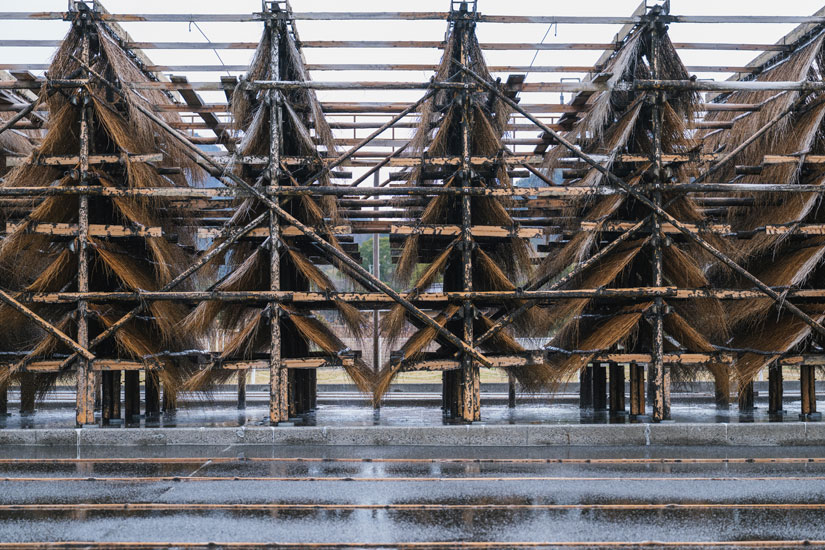
In 1997, a new law made it possible to freely produce salt from seawater in Japan, and a variety of unique salt products using different salt-making methods began to emerge across the country. At this time, Hakata Salt Industry took on the challenge of recreating the salt manufacturing method using the “ryukashiki shijyo kyoyuyo enen,” which was once a part of the scenery of Hakata Island.
The salt paddies are composed of a “flow-through panel,” in which seawater is poured onto a gently sloping gravel bed and circulated to evaporate water with the heat of the sun to create thick salt water, and a “branch and rail” structure made of bamboo branches, from which seawater drips down to increase salt concentration with the force of the wind. Because the system utilizes the power of nature, work is temporarily halted when it rains, but if there is wind, the “branch and jog rack” can be operated day and night to raise the salt concentration. The thick salt water thus produced is boiled down in a flat pot to make salt. This salt manufacturing method, which is influenced by nature, is truly in harmony with nature.
After reviewing the “flowing salt field with branch and joints” as a means of passing on the technology, we were able to confirm once again that the traditional salt taste that Hakata-no-Salt was aiming for has been reproduced under the conditions of the past, and that this salt manufacturing method makes sense even in modern times.
Passing on the Technology and Symbols
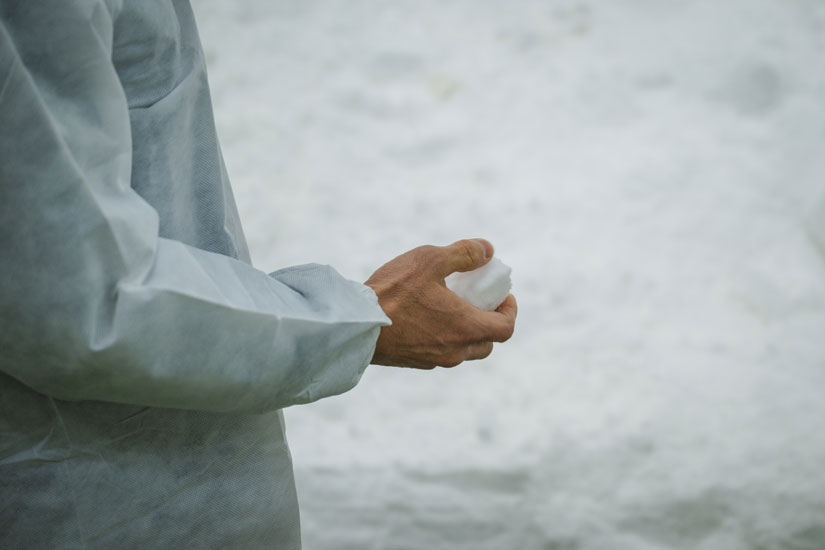
Hakata Salt will celebrate 52 years in business in 2025. Most salt manufacturers were founded after the abolition of the “Salt Monopoly Law,” and there are only about 10 salt manufacturers in Japan with a history of more than 50 years.
Hakata Salt Industry’s philosophy on salt has remained consistent since its establishment. Salt is indispensable for human life, and like water and air, there is no substitute for it. It is not just a seasoning, but a ‘basic food. And we have set ourselves the goal of “pursuing the health optimization of salt and providing it to as many people as possible at as low a price as possible. As a manufacturer with a deep understanding of the history of salt production in Japan, the company is well aware of the importance of salt. They will continue to stay close to consumers and continue to move forward with the history of salt in Japan.
